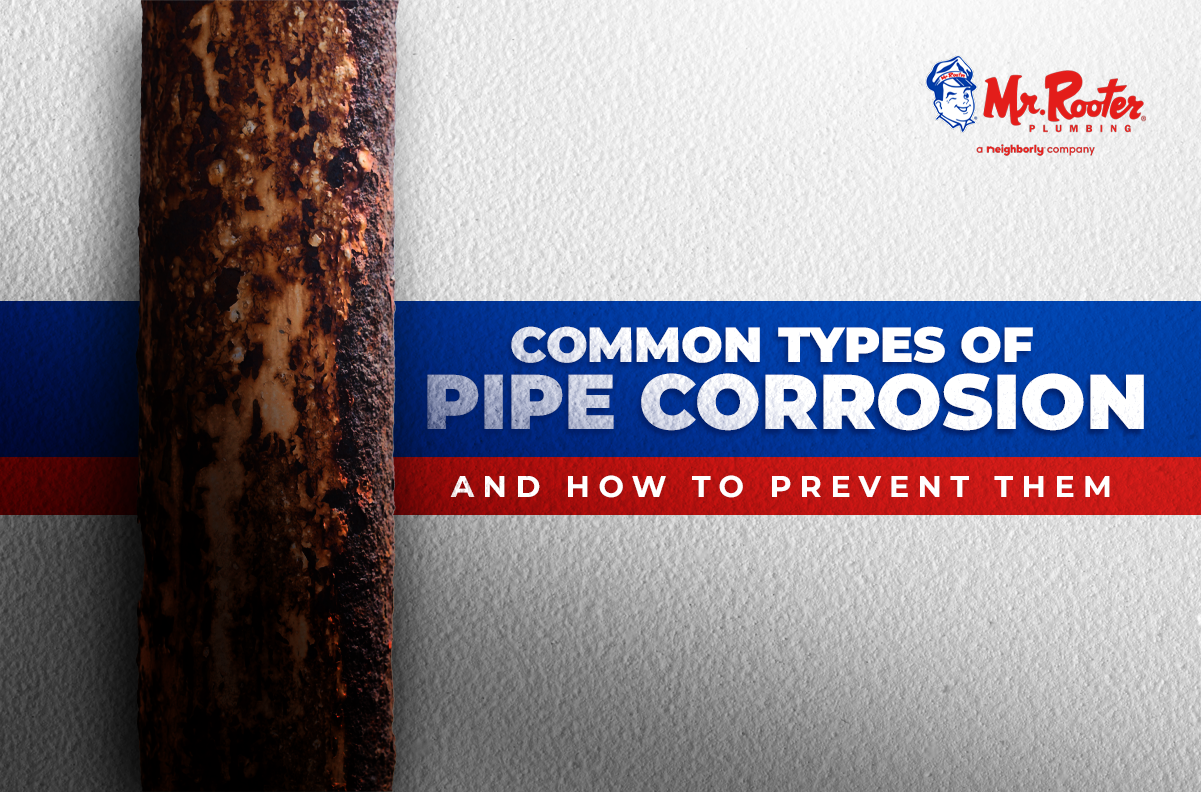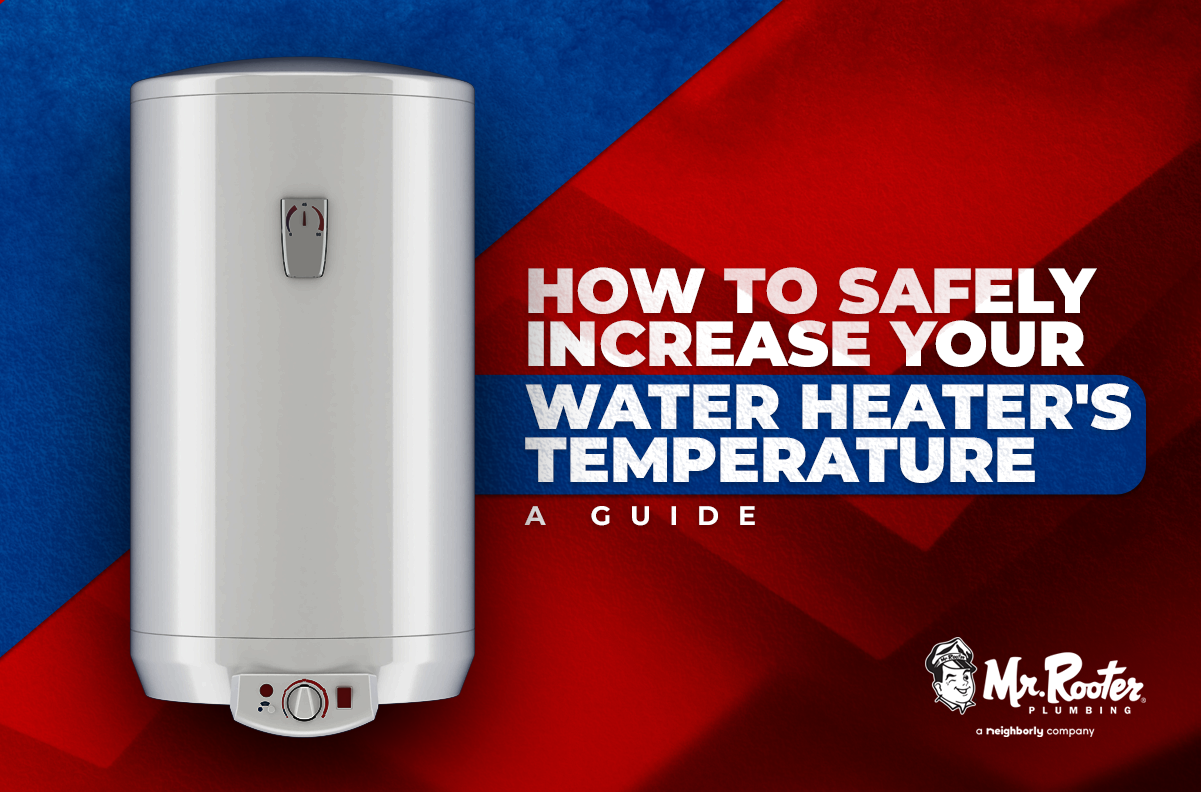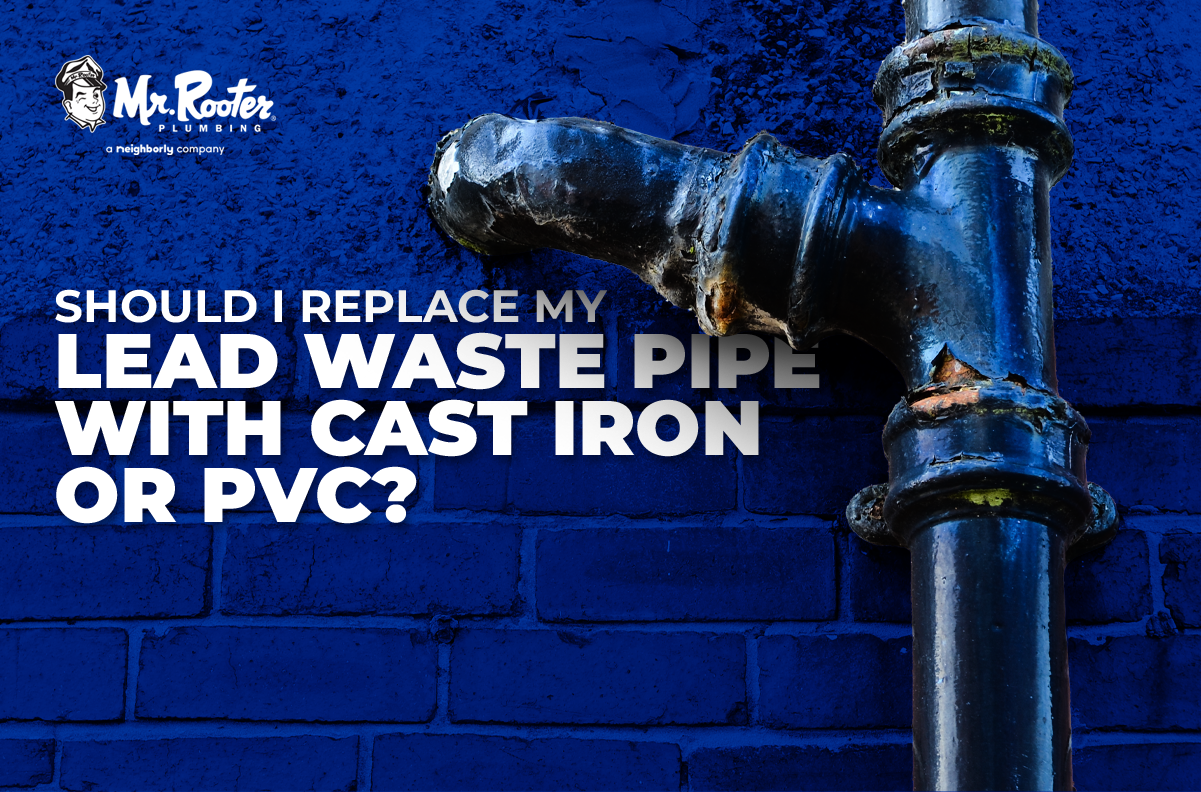Pipe corrosion is a silent dilemma that can wreak havoc on your home’s plumbing system, leading to costly repairs and water damage if left unchecked. This guide aims to shed light on the various types of pipe corrosion, their causes, and how you can identify and prevent them, empowering homeowners to protect their property and ensure the longevity of their plumbing systems.
Understanding Pipe Corrosion

Pipe corrosion refers to the deterioration of pipe material due to chemical reactions between the pipes and their environment. It’s a natural process that can significantly reduce the lifespan of your plumbing, leading to leaks, water quality issues, and in severe cases, complete system failure. Early detection and intervention are crucial in managing pipe corrosion, saving homeowners from unexpected expenses and the hassle of emergency repairs.
💡 Early detection and intervention help minimize property damage, reduce repair costs, and ensure the efficiency and safety of the plumbing infrastructure
Common Types of Pipe Corrosion
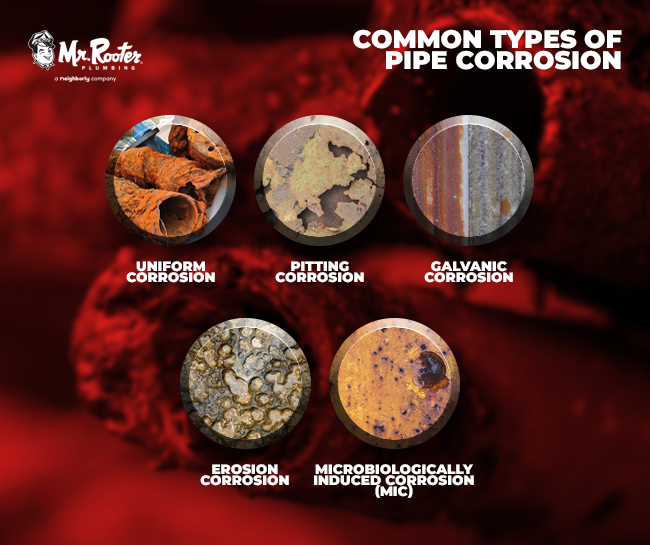
Discover the various forms of pipe corrosion that can threaten your home’s plumbing system. Learn about their causes, identification, and prevention methods to protect your property and ensure its longevity.
a. Uniform Corrosion
This type of corrosion occurs evenly across the pipe’s surface, gradually thinning the metal until it fails. It’s often caused by the chemical composition of the water, including its pH level and oxygen content. To identify uniform corrosion, look for widespread rust or a thinning of the pipe material.
b. Pitting Corrosion
Pitting corrosion is more localized and creates small, deep pits on the pipe’s surface, which can lead to sudden pipe failures. It’s typically caused by the presence of chloride ions in the water. Identifying pitting corrosion involves looking for small, deep holes or cavities on the pipe’s surface.
c. Galvanic Corrosion
This occurs when two different metals are connected in the presence of an electrolyte, leading to one metal corroding faster than the other. It’s common in systems where copper and steel pipes are used together. To spot galvanic corrosion, check for corrosion at metal junctions.
d. Erosion Corrosion
Caused by high-speed water flow or turbulence, erosion corrosion results in the mechanical wear and removal of metal. Signs of erosion corrosion include grooves, gullies, or holes in areas with turbulent water flow.
e. Microbiologically Induced Corrosion (MIC)
MIC is caused by the presence and activities of microorganisms in the water, leading to rapid corrosion rates. Identifying MIC involves looking for areas of accelerated corrosion accompanied by a foul smell or discolored water.
💡 By identifying corrosion early and implementing preventive measures such as regular inspections and water quality management, homeowners can protect their property from costly damage and ensure the longevity of their plumbing infrastructure.
Causes of Pipe Corrosion
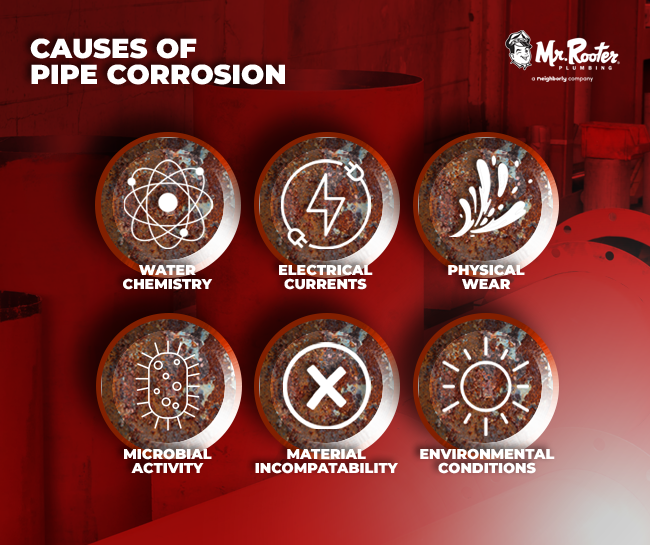
Understanding the root causes of pipe corrosion is crucial for effective prevention. Here’s a closer look at the factors contributing to this pervasive issue:
- Water Chemistry: High levels of chloride, low pH, and oxygen in water can accelerate corrosion.
- Electrical Currents: Stray electrical currents can lead to rapid metal deterioration.
- Physical Wear: High water velocity or pressure can cause erosion corrosion.
- Material Incompatibility: Using dissimilar metals in plumbing can result in galvanic corrosion.
- Microbial Activity: Certain bacteria can induce corrosion, leading to MIC.
- Environmental Conditions: Humidity, temperature fluctuations, and exposure to certain chemicals can exacerbate corrosion.
Prevention and Mitigation
Preventing pipe corrosion involves a combination of regular maintenance, water treatment, and the use of corrosion-resistant materials. Strategies include:
- Regularly checking your plumbing for signs of corrosion.
- Installing water softeners to reduce mineral content in hard water.
- Using corrosion inhibitors in your water system.
- Ensuring proper electrical grounding of metal pipes.
- Replacing dissimilar metals in your plumbing with compatible materials to prevent galvanic corrosion.
Choosing the Right Materials
Selecting corrosion-resistant materials for your plumbing can significantly reduce the risk of corrosion. Materials such as copper, stainless steel, and certain plastic composites are known for their resistance to corrosion and can offer a longer lifespan for your plumbing system.
Understanding the types of pipe corrosion and their causes is the first step in protecting your home from potential water damage. By taking proactive measures to prevent corrosion, you can ensure the longevity and reliability of your plumbing system. Remember, regular maintenance and early intervention are key to managing pipe corrosion effectively. Empower yourself with this knowledge and take action today to safeguard your home’s plumbing.

